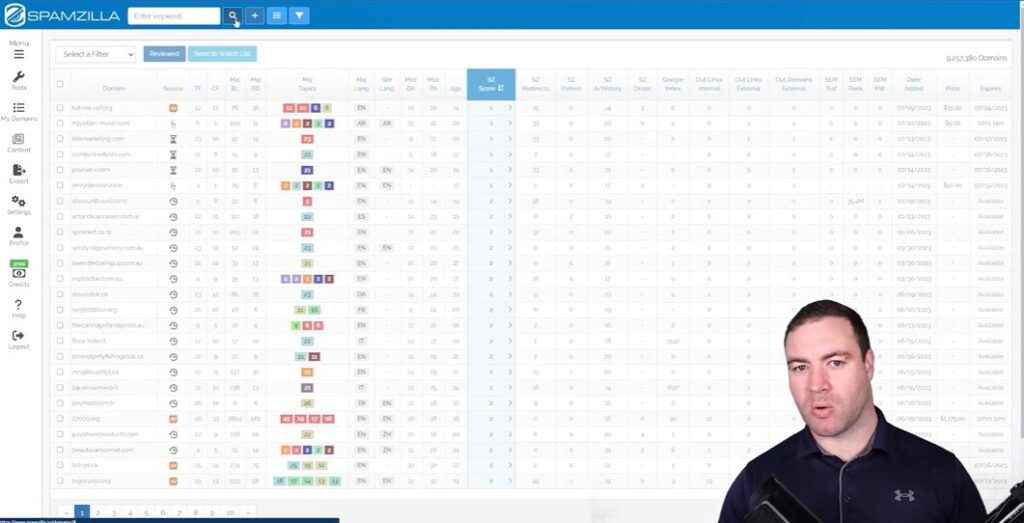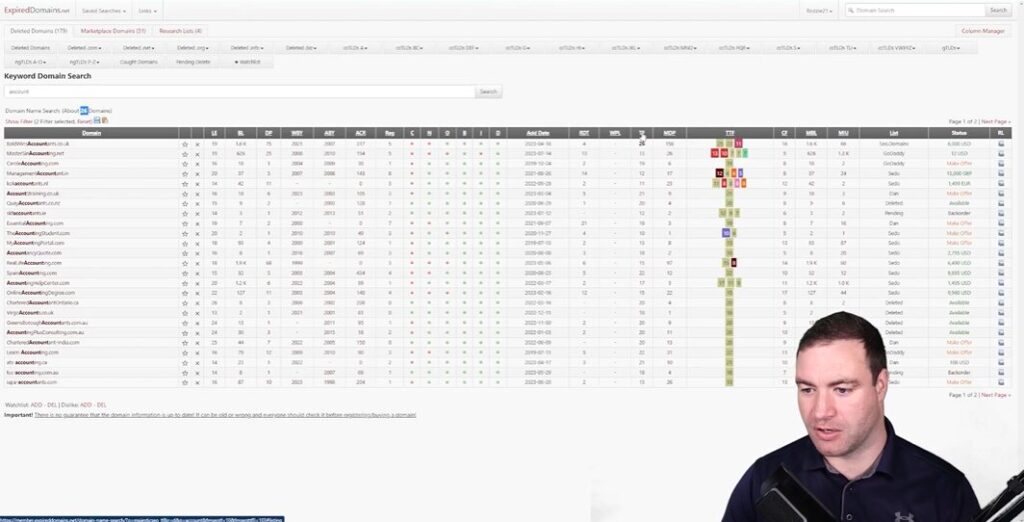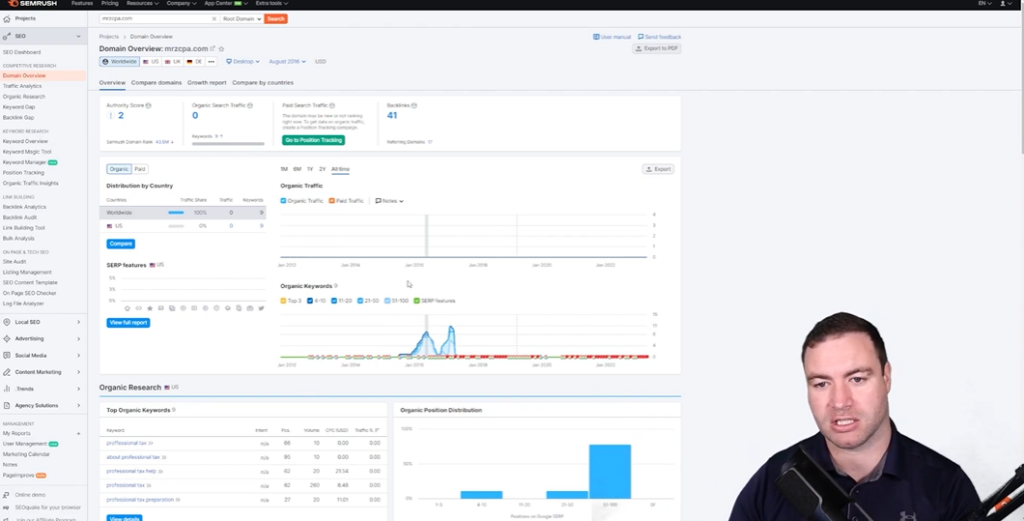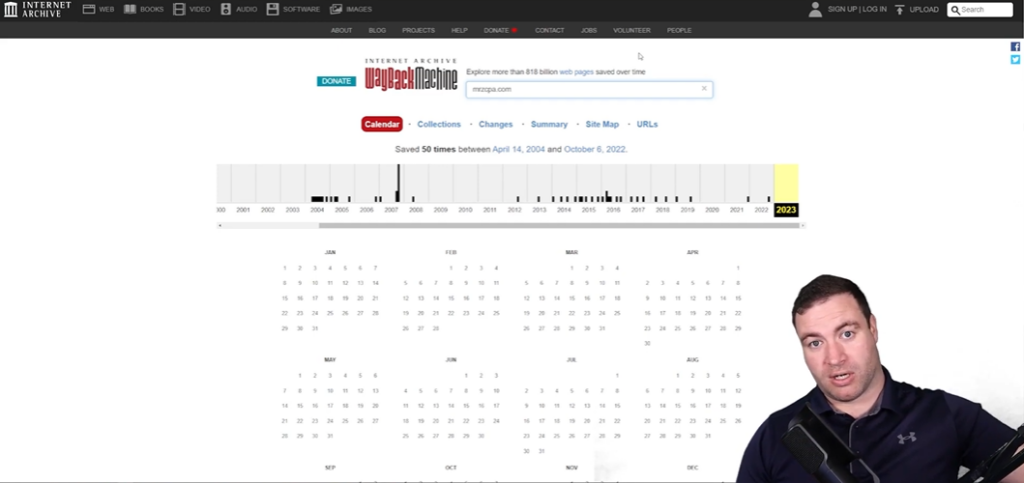As a digital marketer, I've had my fair share of triumphs and missteps when it comes to choosing expired domains. One particularly memorable experience was when I invested in what I thought was a prime domain, only to discover that it had virtually no traffic or backlink strength. Since then, I’ve developed a systematic approach to avoid such pitfalls. Let me take you on my journey of discovering the hidden gems of expired domains!
TL;DR: This guide explores the intricate process on how to find expired domains, emphasizing the importance of trust flow and using the right tools to increase the chances of making a successful purchase.
Table of Contents
Understanding Expired Domains
What Are Expired Domains
First off, you might ask: What exactly are expired domains? In simple terms, these are domains that have not been renewed by their owners and have now become available for purchase. The world of expired domains is a bit like treasure hunting. Some might not be very valuable, while others can hold significant potential.
The Potential Value Of Expired Domains
Now, let’s explore the excitement around these expired domains. Why should we even consider them? Well, they can be incredibly valuable. Here are a few key reasons:
- SEO Benefits: Many expired domains come with established backlinks. If you play your cards right, these can boost your SEO and website’s authority.
- Branding Opportunities: Some expired domains can be quite memorable, serving as a great starting point for a new brand.
- Traffic Generation: If the domain had previous traffic, you might tap into that audience right away.
Imagine waking up one day to find a domain that embodies your business vision, complete with a history that might benefit your SEO efforts. Sounds exciting, right?
Common Pitfalls In Expired Domain Purchasing
However, I can't stress this enough: be careful. There are common pitfalls in the purchasing process. Here are some to keep in mind:
- Overlooking Backlink Quality: Not all backlinks are created equal. Some could actually harm your SEO if they were from spammy sites.
- Ignoring Domain History: Always research the domain’s past. If it had a shady history, such as spamming or illegal activities, that could impact you.
- Getting Caught Up in Auctions: It’s easy to get swept away in bidding wars. Always set a maximum budget before you start.
The Importance Of Thorough Research Before Buying
So, how do we avoid these pitfalls? The answer lies in thorough research. Reliable tools can make a world of difference. I commonly use platforms like Spamzilla and expired domains dot net. These tools help filter out less desirable options.
For example, when using Spamzilla, I focus on trust flow metrics. A trust flow above ten usually indicates a domain with some authority. I also check backlinks to ensure they are from reputable sources. Plus, using resources like the Wayback Machine to study the domain's past is a game-changer.
Remember, taking time to vet your potential purchase can save you from making a costly mistake down the line.
The journey into expired domains can be quite rewarding. With the right knowledge and tools, we can turn these forgotten websites into valuable assets. Wouldn't you want to get your hands on that potential? Let's dig deeper and uncover the perfect expired domain for our goals!
Choosing The Right Tools For Finding Domains

Introduction To Expired Domains Tools
When digging into the world of expired domains, having the right tools is paramount. These tools help us discover domains that can significantly boost our online presence. Why waste time on trial and error when effective options are available?
As I explored this landscape, I found several platforms, but I rely heavily on two: SpamZilla and ExpiredDomains.net. Each has its unique features and functions, making them valuable in their own way.
Comparison Of SpamZilla Vs. ExpiredDomains.net
SpamZilla is my go-to choice. It offers extensive filter settings that allow for customized searches. You can search by domain type, such as .com or .net. On the flip side, ExpiredDomains.net is slightly less user-friendly. It can feel a bit clunky at first. However, it presents similar filtering opportunities once you familiarize yourself with its layout.
Which one should you choose? It often comes down to personal preference. SpamZilla is robust, but ExpiredDomains.net brings its own strengths. Are you ready to experiment?
Setting Up Filters For Better Results
One crucial advantage of these platforms is the range of filters. I typically focus on two main filters: trust flow and backlink analysis. For instance, setting a minimum trust flow value of ten can be a game-changer. This metric tells us if a domain has any real authority.
- Access SpamZilla and set your filters.
- Choose your desired domain type.
- Adjust the trust flow slider.
These steps make finding quality domains much easier. You can also refine results by niche, like targeting the accounting sector specifically.
Why Trust Flow Is Crucial In Your Analysis
Trust flow is one metric I prioritize. It essentially measures the trustworthiness of a domain based on its backlinks. A good trust flow indicates healthy connections, which is essential for effective SEO.
When I evaluate domains, I consider various factors:
- Backlink profile
- Historical relevance
- Past keyword rankings
Using tools like SEMrush and the Wayback Machine, I dissect a domain's history and performance before making a purchase. Why risk it when you can know what you’re getting?
Remember, understanding the past context of a domain can prevent unwanted headaches. It’s not just about finding any domain; it’s about discovering the right one.
Step-By-Step Process For Researching Expired Domains

Learning how to find expired domains can feel overwhelming. But trust me, it’s a game changer for your online presence. I’m here to guide you through it, step-by-step. Let’s get started by discussing the tools I rely on. Specifically, I love using SpamZilla for its extensive filtering capabilities.
Setting Filters In SpamZilla
First things first, when you log into SpamZilla, you'll find a plethora of options. It’s important to set the filters according to your needs. Do you want the .com domains? Or, perhaps you’re interested in .com.au? You can easily customize this.
- Select your desired domain types.
- Choose your preferred expiration time frame.
- Focus on more popular TLDs if you're not specific about the country.
By applying these filters, you can quickly narrow down to domains that suit your criteria. But we can go deeper.
Checking Trust Flow And Citation Flow
Once I have my filtered list, it’s time to check the trust flow and citation flow. For those not in the know, trust flow is a score that measures the quality of a site's inbound links, while citation flow measures the total number of links. Generally, I look for domains with a trust flow of at least ten. This is an indicator that the domain holds some authority.
“The wrong choice could result in wasted funds.”
Analyzing Subcategories Relevant To Your Industry
Next, I recommend analyzing subcategories relevant to your industry. If you’re in accounting, searching through finance-related domains is a good idea. By doing this, you’re ensuring that the domain fits well with your niche. It improves your chances of revitalizing the domain successfully.
Focus On Backlink Quality
Finally, let’s talk about backlink quality. I can’t stress enough how crucial this is. Investigating a domain's backlink profile ensures you're not picking a site riddled with toxic links. Tools like SEMrush and the Wayback Machine are invaluable here. They help you uncover the history of the domain.
Think of it this way: it's easier to build a house on solid ground than on sand. The stronger your backlinks, the more successful your domain will be in the long run.
This is how I conduct my research on expired domains. Each step is integral to finding a domain that can truly benefit your objectives. So, don’t rush this process - take your time, and make informed decisions!
Evaluating Backlinks And Trust Flow

When it comes to SEO, the terms trust flow and citation flow are often thrown around. But do you really know the difference? Let me break it down for you. Trust flow measures the quality of backlinks. Think of it like a popularity contest based on trustworthiness. On the other hand, citation flow indicates the number of backlinks pointing to a domain. Thus, a site can have a high citation flow but low trust flow, which is a warning sign.
Why High Trust Flow Domains Matter
Why should we prioritize domains with a high trust flow? Well, simply put, sites with a strong trust flow tend to have better authority. This means if you're linking from or to these domains, you're more likely to see a boost in your SEO. You wouldn't want to share a stage with someone who isn’t trustworthy, right? The same applies here. High trust flow domains are generally recognized as more reliable and can significantly impact your site's rankings.
Analyzing Existing Backlinks For Quality
Now, let’s get into analyzing your existing backlinks. This is crucial for maintaining a healthy backlink profile. When I assess backlinks, I employ tools like Majestic to evaluate both citation flow and trust flow. This allows me to see not just how many links I have, but how valuable those links are. Are they coming from reputable sources? Or are they spammy, low-quality sites? Identifying and keeping the good links while removing the bad ones is essential.
Red Flags To Watch Out For
- Links from sites with low trust flow: A trust flow below 10 is often a huge red flag.
- Unrelated niche links: If a site links to you but it's completely off-topic, it could hurt your credibility.
- Link farms: These are spammy sites that exist solely to generate backlinks. Avoid them like the plague.
In conclusion, understanding trust flow, analyzing existing backlinks, and knowing what red flags to look for can guide us in building a strong SEO strategy. As I’ve learned in my journey, taking these steps can mean the difference between a thriving or toxic backlink profile. Strive for quality over quantity!
Diving Into Keyword Research And Relevance

Why Keywords Matter In Expired Domains
When we dive into the world of expired domains, keywords play a crucial role. Imagine you find a domain that looks good. It has a catchy name, but what if it doesn’t align with any relevant keywords? You might just end up with a nice shell, but essentially empty inside.
Keywords are the bridge between what people are searching for and what your site will offer. If the domain once hosted content that was heavily focused on a specific set of keywords, those terms can provide insight into its past performance. Without proper keyword research for your website, you risk losing traffic.
How To Research Past Rankings
Let’s get into how we research past rankings. A great place to start is tools like SEMrush or Ahrefs. They allow us to check which keywords a domain previously ranked for. Setting this up isn’t difficult. Just input the expired domain and look for its ranking history.
Example:If you find a domain related to "digital marketing," check what keywords were driving traffic.- Examine the dropped rankings - This helps gauge its potential.
Tools To Assist In Keyword Analysis
In my journey of handling expired domains, I often lean on a few trusty tools. Here’s my list:
- SEMrush: For keyword tracking and competitor analysis.
- Majestic: To evaluate backlink quality.
- The Wayback Machine: Perfect for seeing what the domain used to look like.
- Spamzilla: Great for extensive filter settings when searching for domains.
Example Of Conducting Keyword Research
Now, let’s talk about an example. Suppose I stumble upon an expired domain related to "home gardening." First, I’d use SEMrush to find out what terms were effective. I input the domain and filter for relevant data, filtering out terms that have strong search volume and low competition.
Next, I would turn to Majestic. By evaluating the backlink profile, I check the anchor texts associated with past links. If those keywords match what I found on SEMrush, I have a strong case for the domain’s value.
Then, I look at the Wayback Machine. This step is essential to see how the domain was used previously. If it was all gardening content, then it’s a good indicator that the previous SEO efforts were substantial.
Through these structured steps, it becomes evident: it’s not just about the domain name. The keywords and their relevance dictate its future potential.
Confirming Your Findings With The Wayback Machine

The Wayback Machine is a powerful tool when it comes to tracking domain history. I often find myself diving into its vast archives. It’s like peering into a time capsule of the internet. But how can we use it effectively?
Using The Wayback Machine To Track Domain History
First off, understanding how to navigate the Wayback Machine is essential. Simply input the URL of the domain you're interested in. Instantly, you get a timeline of archived snapshots. Being able to see what a site looked like in previous years can give you insights into its credibility and usability. Did the design change drastically? Was its content consistent? These details can shape your decision.
What To Look For In Past Snapshots
When examining past snapshots, I focus on a few key elements:
- Content Changes: Is the content still relevant? Did it align with the domain's niche?
- Design Elements: Was the site well-designed? An outdated look can affect user trust.
- Backlink Analysis: Scrutinize the links. Were they from reputable sources?
These factors all impact the site’s SEO potential.
An Example Of Successful Domain Validation
I had a great experience validating a domain using the Wayback Machine recently. I found a domain that initially seemed lifeless, but as I scrolled through the history, I discovered it had been a thriving resource for graphic design. This historical insight prompted me to pursue the domain, and the backlinks I identified earlier proved fruitful in my SEO efforts.
Cautions Regarding Data Retrieved From Archived Pages
However, not all that glitters is gold. While the Wayback Machine is a treasure trove, it doesn’t capture every detail accurately. Here are a few cautions:
- Data may be missing: The archiving process isn’t perfect. Some snapshots may not exist.
- Context is key: Just because content was relevant once doesn’t mean it is today.
- Toxic Backlinks: Even if a domain looks appealing, past backlink profiles can be damaging.
In sum, the Wayback Machine is a valuable ally in domain validation, but always tread carefully. Use it alongside your other tools for the best results.
Final Thoughts: Successfully Navigating Expired Domain Purchases
As I reflect on our journey on how to find expired domains, I realize how crucial it is to recap some key takeaways. First and foremost, having the right tools is essential. This cannot be overstated. Platforms like Spamzilla and expired domains dot net are invaluable. They allow for in-depth filtering and tailored searches to match your specific goals. Remember, an expired domain is not just a URL - it's an opportunity. But without the right approach, that opportunity could turn sour.
Common Mistakes To Avoid
Now, let's face it. Mistakes happen. One common pitfall is not checking the backlink profile thoroughly. Rushing through your research can lead to disastrous results. Trust flow metrics are your friend! A domain with a low trust flow can drag you down in search rankings. I advise looking for domains with a trust flow of ten or more. It shows there’s authority present. Don’t let yourself be swayed by flashy names; ensure the substance seriously backs them up.
Another mistake? Ignoring the history. Using the Wayback Machine can unveil the original use of a domain. It’s like peeking behind a curtain. What was once a thriving site could have left a toxic footprint that impacts your new project. Always ask yourself: “What has this domain been through?”
Sharing And Learning Together
Don't forget, I encourage you to share your own experiences with expired domains. Your stories could help others avoid those missteps we sometimes stumble into. Whether you found a gem or learned the hard way, your insights matter. We're all in this together.
Engage With Our Community
Lastly, let’s foster a community of sharing. Best practices evolve, and we can all benefit from new perspectives. I urge you to engage. Drop a comment below with your take on expired domain purchases. Together, we'll cultivate a more knowledgeable audience, ready to tackle the unique challenges of this niche. So, are you ready to dive in?
In conclusion, navigating expired domain purchases is quite the task, but it can also be rewarding if done right. With thorough research, the right tools, and a community to support you, the sky is the limit. Let’s continue this conversation and explore the possibilities together!




